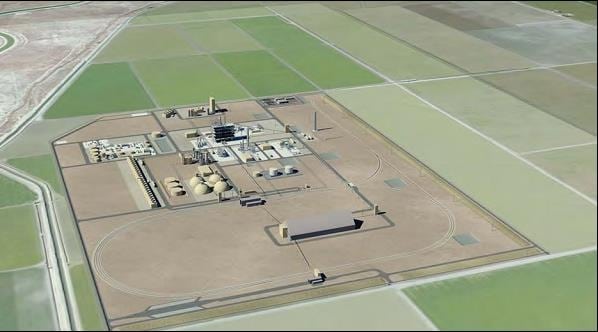
SCS Energy has pulled the plug on its Hydrogen Energy California (HECA) project, at least for now. In a March 3 filing with the California Energy Commission (CEC), the company officially withdrew the project’s application for certification (AFC). “Given the current uncertainty related to timing, the time that has passed since some of the analysis related to the Project was completed, and the likely need for substantially revised analysis to reflect anticipated changes to the Project, Applicant has decided to withdraw the Revised AFC,” the document says.
The HECA project, as initially planned, would be a new-build, $4 billion, 390-megawatt CCUS facility located in Kern County, California. Certification by the CEC is necessary for the project to be licensed under the California Environmental Quality Act.
However, the company remains open to the possibility of pursuing a new AFC, SCS CEO Jim Croyle told GHG Daily by email. “It just seems to us, while there will not be any major design changes in the project up to and through carbon capture, it will take some additional time to work out the sequestration part of the project, and a new AFC seems more efficient than amending the old,” Croyle wrote.
The HECA project has faced a litany of issues since its inception including pushback from residential and environmental groups, and difficulty securing an off-take agreement for the project’s captured CO2.
SCS more than two years ago had been in the process of signing such an off-take agreement with Occidental Petroleum. The company was to buy the captured CO2 for use in enhanced oil recovery, but in February 2014 the company announced the spinoff of its California operations. At that time, it appeared the newly formed California Resources Corp. (CRC) would continue to work with HECA to develop an agreement. However, due to reported “internal issues” at CRC, these discussions have fallen off.
“In retrospect, HECA probably waited too long for CRC to complete its transition and come back to the HECA negotiations,” Croyle wrote.
HECA began working with scientists at the Lawrence Berkeley National Laboratory, as well as the West Coast Regional Carbon Sequestration Partnership (WESTCARB), to develop a storage-only, non-EOR, option for its CO2. “This is a major change to the project, which has already been delayed in the permitting process,” Croyle explained.
In the March 3 document, SCS holds that the area is well suited for sequestration. “Preliminary assessments of the geologic storage potential at the HECA site have concluded that shifting to a saline formation injection on-site has a high potential for success,” the document says.
While the company hopes to resurrect HECA, it remains unclear when that might happen. “I have stopped predicting timeframes for these projects. [The Texas Clean Energy Project] was ahead of us by two or three years and still has not been able to start construction,” Croyle said.
The company is working to resolve the details of carbon sequestration and the permitting of injection wells with Environmental Protection Agency. “We are in discussions to enter into an agreement to work the sequestration issues and related permitting of wells with the EPA using FutureGen work with the EPA as the model,” Croyle told GHG Daily. “When those discussions are concluded we may have something to announce. The good news is that, with DOE and California funding, the geology in the Southern San Joaquin Valley, including under our site, has been well defined and analyzed for safe, permanent carbon storage. That is an excellent starting point for us.”